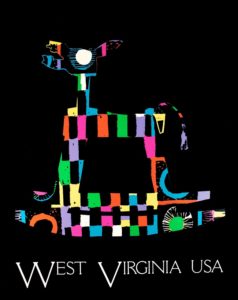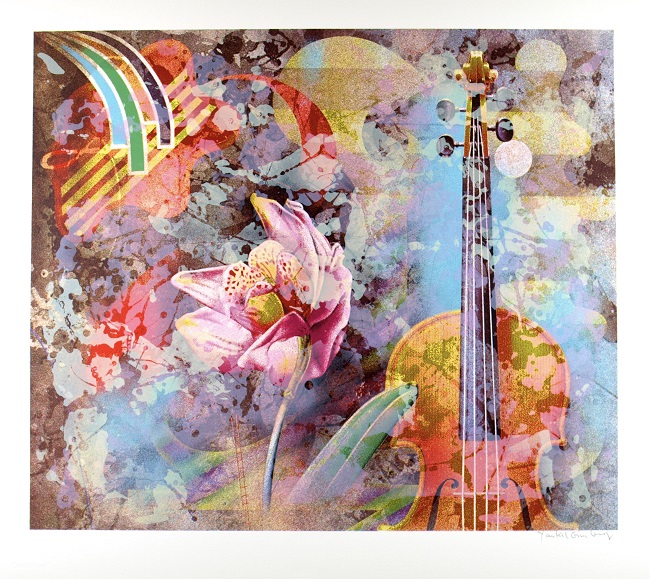What Is a Serigraph Print?

“West Virginia USA” serigraph by Russel Hardin
For collectors dedicated to cultivating a valuable collection of fine art, it can sometimes be challenging to find out what type of art print is worthy of their time and resources. Some types of art prints are more well-known than others, but “popularity” often doesn’t equate to prudent art investments. While giclée prints and lithographs are common and well known, the fine art collector should consider the serigraph print as often the better investment.
Serigraph Print: A Definition
The word “serigraph” comes from the Latin for “silk” and the ancient Greek for “writing.” A serigraph print is an original artwork created by applying ink through a silkscreen to paper. The finished product can last for generations. To understand it better, one must look at how it is made and where it came from.
How Is It Made?
Serigraph printing has morphed to various techniques over the years, but in principle, it has just one method. A silkscreen or other porous fabric is stretched taut on a frame, and that fabric—through various treatments—becomes a stencil held together by that fabric. Then, one color at a time, ink is pushed—squeegeed—through the fabric until the printed image appears on the paper below it. The stencil maker blocks out the negative space around each section before applying the paint to the silkscreen. Each color—one at a time—then goes through the screen onto the paper, either by hand or machine.
History of Serigraphy
Serigraphy, also known as screenprinting or silkscreening, originated in ancient Chinese and Japanese fabric printing methods. Serigraphy as we know it today did not appear until 1907, when Samuel Simon of Manchester, England, patented the modern serigraph printing process. The form took off in the 1950s when artists like Andy Warhol, Peter Max, Yaacov Agam, and other Pop Art artists utilized serigraph prints’ unique advantages.

“Musical Fantasy” serigraph by Yankel Ginzburg
Why Collect Serigraph Prints?
Limited Edition serigraph prints are almost one-of-a-kind originals in that they are completely or partially handmade, and each typically has a unique number assigned to it. Each print can be different, and its production often requires the oversight of the artist himself. They usually are “published” as limited editions. Serigraph prints are not reproductions, although they may be inspired or similar to an original work of art by that same fine artist. Serigraphs are meticulously-crafted art pieces with centuries of printmaking technique behind them. These serigraph prints have the advantage of offering the creative fine artist a wide variety of materials to print their images upon—not just paper but also wood, plastic, glass, metal, leather, etc. The colors of serigraphy are brighter and last longer than any other form of printing. Also, the ink used in serigraphy often has a texture and thickness that no other printing process can come even close to matching, and that, in part, contributes to its fade resistance! Collecting serigraphs can be an affordable yet valuable start to your fine art collection, a fine place to begin.
Contact Zimmerman Fine Art Today!
Since 1979 Zimmerman Editions Ltd. has worked closely with many internationally acclaimed artists to execute editions of their most unique images. Collaborating directly with the artists, Zimmerman Editions’ atelier has printed, fabricated, and published many special serigraph limited editions of fine art, including both prints and sculptures. All images have been faithfully produced to meet the artists’ most exacting requirements. Many of these high-quality art prints and objets d’art are represented in public and private collections around the world.
If you are a fine art dealer or marketer, or interested in collecting contemporary fine art, contact us today through our short form or our number at 888-484-1850. For more about fine art, keep in touch through Facebook, Twitter, and LinkedIn!
